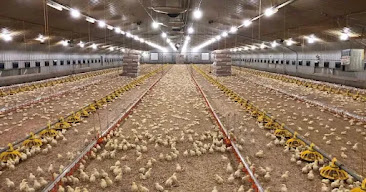In daily human activities, light plays an important role, be it eating, drinking, working, and playing. This is also applicable to the lives of animals as well as plants. Light is the natural agent that stimulates sight and makes things visible, while the process of dealing with or controlling things or people is known as management.
This article, Lighting Management in the Poultry Farm Brooding House, aims at the managerial aspect of the lighting source in the brooding house, the importance of lighting, and the duration.
Why is an extra light source essential in the poultry farm brooding house?
This is a question that most farmers ask almost every time. Some just give light to the chicks because they are told to do so without knowing the significance of doing so. Still, the question still baffles them. Light, as it has been stated earlier, is the natural agent that stimulates sight and makes things visible. It is observed that chicks require a percentage of nutrition in their diet in the first week of their life. This is mainly to help speed up their growth rate, build their feathers in other ways, protect them from colds and build their immune systems.
What's the time frame for using light?
As light is important to the chicks, there is time for everything. Light sources should be made available for the chicks nonstop, meaning throughout the day and night every day, and the minimum time for the withdrawal of light sources from the birds in the brooding house is 3 days. It depends on your financial strength, the breed of birds, and the purpose of the birds. For those raising broiler chickens for a targeted time of 5 to 6 weeks of production, it is best to provide constant lighting for the birds until sales, which should be at 5 weeks of age.
Can't I just give them light at night alone?
Giving the chicks light at night is not a bad idea. Running the light nonstop creates a situation whereby some parts of the brooding room are dark, making some chicks cluster despite an excellent room temperature and some avoiding feeding. To give light only at night, the farmer must make sure there is a perfect reflection of light rays entering the room.
I don't know the best light source I can use.
Truly, not all lighting sources are reliable enough to be used inside the brooding house. The use of the lantern will consume kerosene, and still, the reflection won't be enough to reach every corner of the room; also, the fuel might finish at an awkward time. Using a generator as a power source is a good idea, but it's very costly to maintain it. The best lighting sources for the brooding room that I can suggest are any battery-powered lighting sources like rechargeable lamps or solar power sources.
Having a good power source helps to relieve the stress and panic level of the farmer when combined with good management and biosecurity. Lighting management is one of the key roles in setting up a poultry farm, and becoming a successful farmer requires good management skills. Don't forget to share your experiences with us in the comment box.





